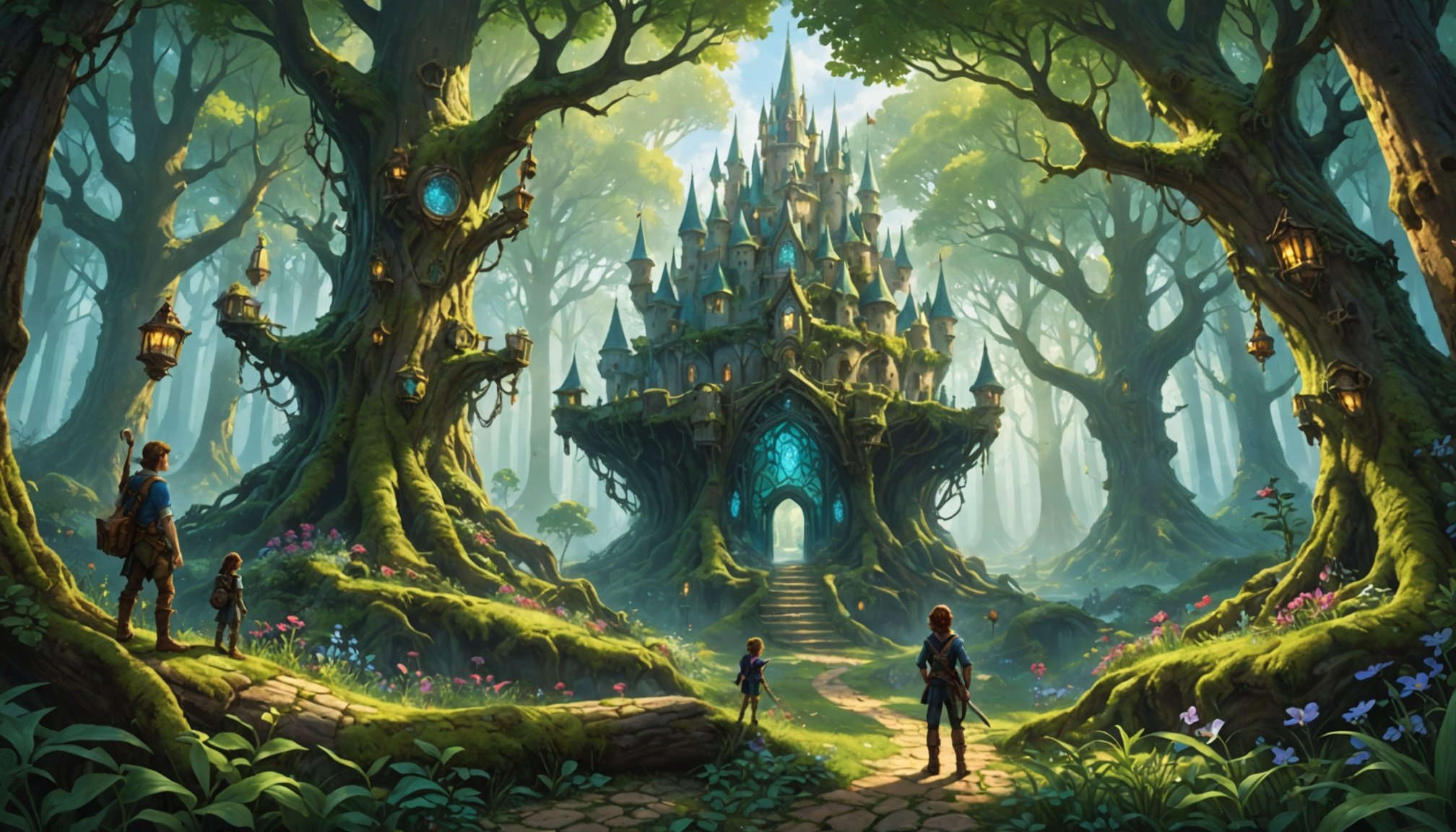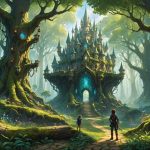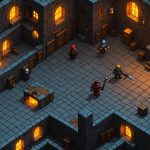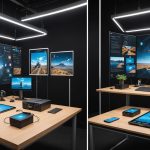Understanding the Essence of Enchanted Forest Realms
Enchanted forest design is synonymous with creating fantastical, immersive worlds that captivate audiences through literature, films, and games. These realms are characterized by their lush, ethereal landscapes filled with unique flora and fauna, which often evoke a sense of mystery and otherworldliness. Such environments tend to be rich in atmospheric and visual details, playing a crucial role in storytelling and game design.
The importance of setting cannot be understated; it lays the foundation for the narrative, providing context and immersive experiences that draw the audience deeper into the unfoldment of events. Whether it’s the ominous trees in a classic fairy tale or the vibrant biodiversity of a fantasy MMORPG, every element contributes to the world-building effort, enhancing the richness of the fantasy world.
In the same genre : Transforming Roguelike Game Design Through Machine Learning: Unleashing the Power of Procedural Creativity
The atmosphere crafted within these enchanted landscapes sets the mood and tone for interaction, directly influencing how the player or audience engages with the story. By leveraging intricate details such as shifting light patterns, ambient sounds of rustling leaves, or the interplay of shadows, designers can create a more engaging, immersive environment. This interactivity magnifies emotional connections and ultimately heightens the experience, making the enchanted realm more compelling and memorable.
World-Building Techniques for Enchanted Forests
Creating vibrant enchanted forest environments requires masterful use of world-building strategies. The essence of these landscapes lies in their ability to blend environmental storytelling with sensory and visual elements that transport audiences into immersive worlds.
This might interest you : Elevating Augmented Reality Gaming: Harnessing Neural Networks for Instant Object Recognition
Layering Details in Environmental Design
One must intricately layer details to enhance enchantment. Begin with flora and fauna selection; exotic plants and mythical creatures evoke a world that’s lush and beguiling. Think about how unique ecosystems adapt to magical influences—glistening vines, whispering willows, and ethereal murmurs add depth to the setting.
Creating Sensory Experiences
Incorporating soundscapes—such as babbling brooks or distant hoots of mystical creatures—enhances immersion by tapping into sensory experiences. These auditory cues, alongside visual storytelling, seamlessly draw players deeper into the enchanted world. Try overlaying these with gentle sensory elements like mist and shimmering light for authenticity and allure.
Integrating Lore and History
Building a compelling lore involves developing rich backstories for both the land and its inhabitants. The history of an enchanted realm could involve ancient battles, forgotten magic, or symbiotic relationships between mystical beings and nature. When these narratives align with the visual and sensory layers, they create a cohesive and compelling landscape that enthralls audiences.
Character Development in Exploration Adventures
Character development is crucial in crafting captivating exploration adventures, as it enables players to form emotional connections with protagonists. Engaging character design involves creating characters with distinctive personalities, backstories, and growth arcs. A character’s journey should be relatable and inspire empathy, drawing players deeper into the immersive environments.
Non-playable characters (NPCs) enrich the narrative landscape and enhance interaction. Diverse NPCs, each with unique roles and histories, provide depth and variety; their interactions can challenge or assist players, adding layers to the storyline. Creating complex relationships between NPCs and protagonists fosters a dynamic, interactive gameplay experience.
Understandably, a character’s backstory is pivotal. It lays the foundation for believable motivations, influencing how they interact with the fantasy worlds they inhabit. Backgrounds reflecting struggles, triumphs, or mysteries can trigger player curiosity, propelling explorative endeavors and engagement. Well-rounded characters with evolving narratives add dimension, making the adventure more compelling.
Consider how world-building strategies and character dynamics jointly shape players’ experiences. Both are entwined, enriching the exploration of enchanted realms and ensuring players engage emotionally with both the narrative and the world. Experts view this character-world synergy as essential for crafting memorable exploration adventures.
Narrative Strategies for Adventure Engagement
Crafting an engaging adventure requires strategic use of storytelling techniques to captivate the audience. Narrative structure plays a vital role, weaving together intricate plot development that forms the backbone of an enticing journey. These tales are most effective when a careful blend of tension and conflict is introduced, ensuring audiences remain invested in the story’s progression.
Building Tension and Conflict
Effective narratives in enchanted settings hinge on building tension and conflict. By introducing conflicting elements and character dilemmas, designers can keep players on their toes. This not only sustains interest but also challenges them to consider diverse perspectives and solutions.
Utilizing Quests and Challenges
Quests and challenges should be thoughtfully integrated within the narrative. The journey becomes more compelling when players face hurdles that test their skills and decision-making abilities. This introduces a sense of accomplishment as challenges are overcome, motivating continued exploration.
Weaving Choices into the Story
Allowing player choices to influence the narrative is a hallmark of successful storytelling in enchanted settings. By embedding decision-making throughout the plot, the audience feels a heightened sense of immersion and involvement in the unfolding adventure. This agency fosters deeper engagement with the world, rendering the experience both memorable and unique.
Interactive Elements to Enhance Exploration
Incorporating interactive gameplay is key to enriching exploration in fantasy settings. This begins with crafting puzzles and challenges that engagement mechanics make deeply connected to the enchanted environment. Think of riddles embedded in stone tablets or pathways that shift when light shines in a specific way. These should not only test players’ skills but also encourage immersion by naturally blending with the surroundings.
A well-designed reward system is crucial for motivating exploration. By offering players in-game incentives such as rare items or unlocking new storylines, they are more inclined to delve deeper into the mysterious landscapes. This can greatly enhance player satisfaction and drive continued interaction.
Player choices are vital in shaping their journey. Allowing them to decide how to tackle obstacles or which paths to pursue fosters a sense of agency and immersion. Such player agency ties directly into their emotional investment, making each decision significant and personal.
By designing environments and mechanics that are both engaging and rewarding, creators can provide a more immersive experience. This enhances not only the exploration itself but also the overall satisfaction, drawing players into the allure of enchanted realms.
Visual and Resource Recommendations
To bring the magic of enchanted forest design to life, leveraging the right visual aids and resources is essential. Concept art and illustrations act as blueprints, helping designers envision and communicate the atmosphere and unique qualities of their fantasy worlds. Art serves not only as an inspiration but also as a guiding tool in capturing enchanting elements and lush environments integral to immersive landscapes.
Utilizing Concept Art and Illustration
Concept art is the backbone of world-building, providing a visual reference that ensures consistency and cohesion in environmental storytelling. When combined with immersive sounds and interactive design, it solidifies the atmosphere, enhancing audience engagement in both literature and media.
Recommended Software and Tools
Selecting the appropriate tools can significantly influence the design process. Software such as Adobe Photoshop and Blender are popular for crafting detailed landscapes and characters. These tools allow for intricate design resources creation, ensuring fantasy environments remain vibrant and engaging.
Case Studies of Successful Projects
Examining successful projects provides insight into effective design and execution. Popular games like “Ori and the Blind Forest” demonstrate how cohesive visual and interactive elements captivate audiences. By analyzing these, designers can glean valuable lessons in achieving breathtaking and immersive environments.











